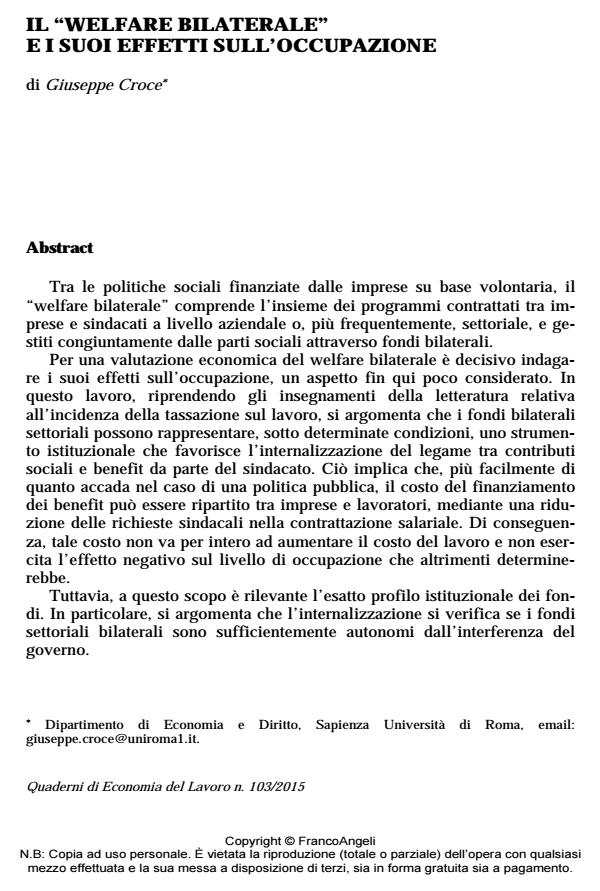Il "welfare bilaterale" e i suoi effetti sull’occupazione
Journal title QUADERNI DI ECONOMIA DEL LAVORO
Author/s Giuseppe Croce
Publishing Year 2015 Issue 2015/103
Language Italian Pages 22 P. 223-244 File size 138 KB
DOI 10.3280/QUA2015-103010
DOI is like a bar code for intellectual property: to have more infomation
click here
Below, you can see the article first page
If you want to buy this article in PDF format, you can do it, following the instructions to buy download credits

FrancoAngeli is member of Publishers International Linking Association, Inc (PILA), a not-for-profit association which run the CrossRef service enabling links to and from online scholarly content.
A large number of companies provide social benefits to their employees on a voluntary basis. In most cases such social schemes are jointly established and managed by companies and trade unions at the firm or, more frequently, at a sectoral level through bipartite funds. From an economic point of view, the evaluation of the "bipartite welfare" crucially depends on its effects on the employment level, an aspect so far mostly neglected. This paper takes into account the lessons from the literature on the incidence of labour taxation to analyse the case of social policies delivered by bipartite sectoral funds. The intuition is that their peculiar institutional profile may favour the internalization of benefits by the unions. If this actually occurs, it can be expected that the costs of the benefits will be shared between the employers and the workers. As a consequence, the costs of the benefits exert a less detrimental effect on the labour cost and on employment levels than in the case of public schemes. However the exact institutional profile of the funds crucially affects the degree of internalization. In particular, it is argued that this may actually occur provided that the bipartite sectoral funds are sufficiently autonomous from government interference.
Giuseppe Croce, Il "welfare bilaterale" e i suoi effetti sull’occupazione in "QUADERNI DI ECONOMIA DEL LAVORO" 103/2015, pp 223-244, DOI: 10.3280/QUA2015-103010